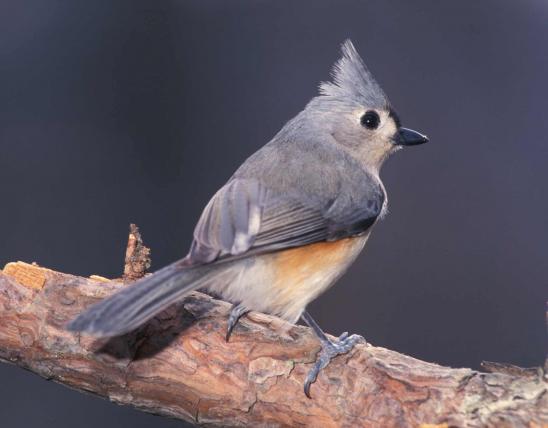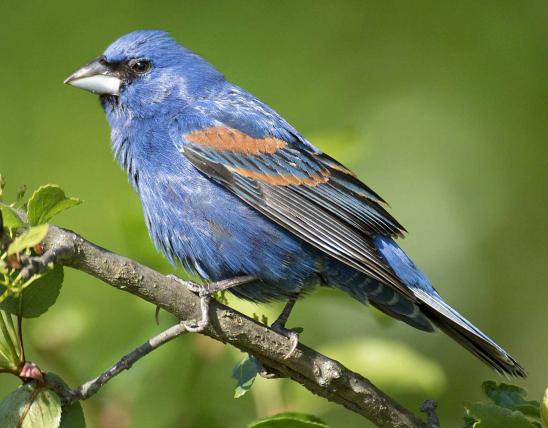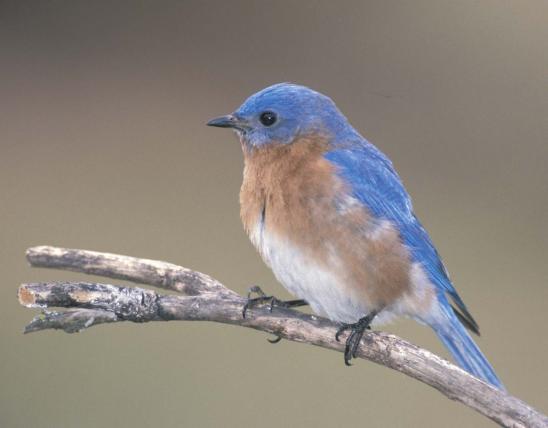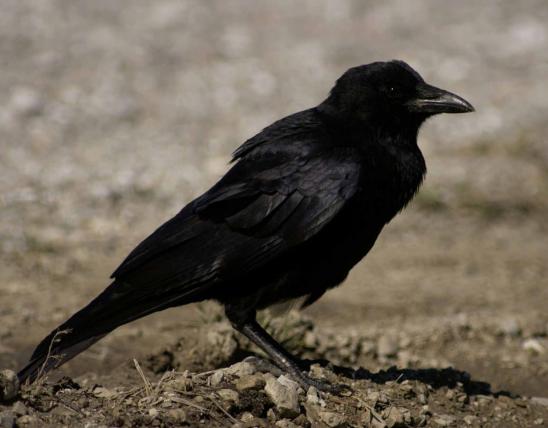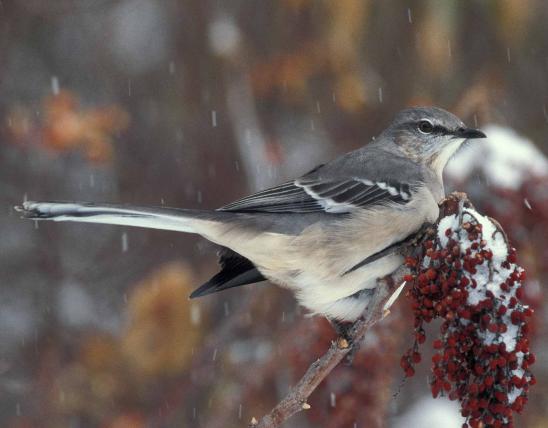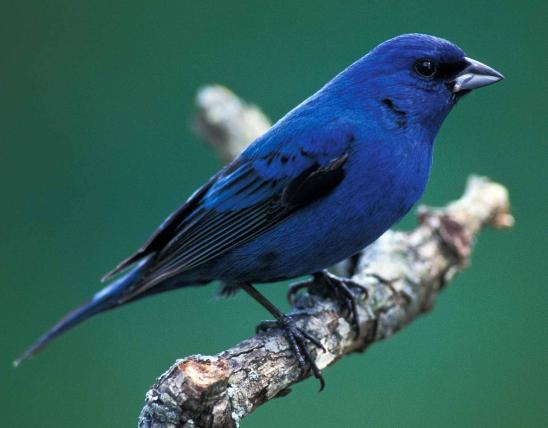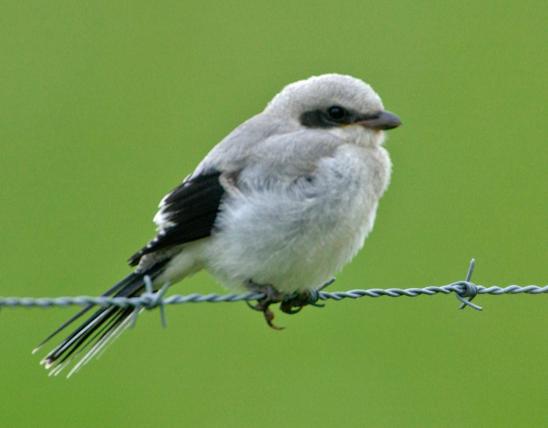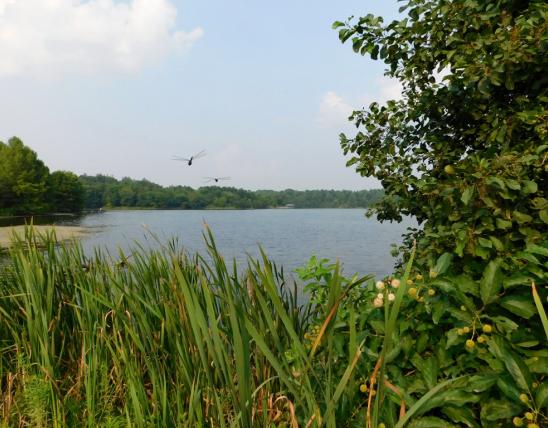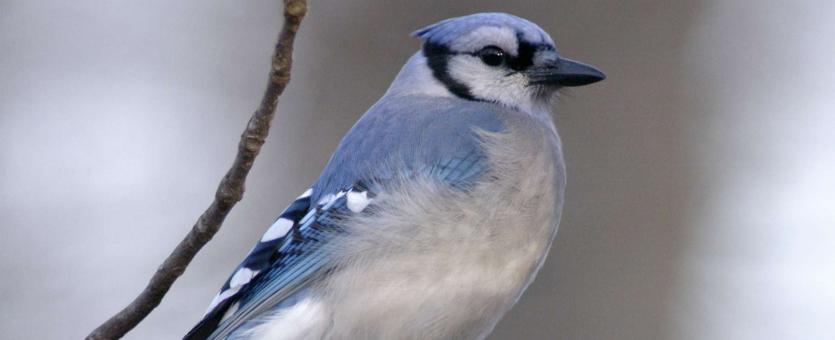
Blue jays are relatively large songbirds (about the size of a robin) with blue upperparts and whitish underparts. A blue crest on the head can be raised or lowered depending on the bird’s mood. The back is rather lavender, and the wings and tail are sky blue with black bars and white highlights. The strong bill and feet are black; the face is white and is nearly surrounded by a black collar. The voice varies from soft murmurs to loud screams to clear, chime-like whistles.
Length: 11 inches (tip of bill to tip of tail).
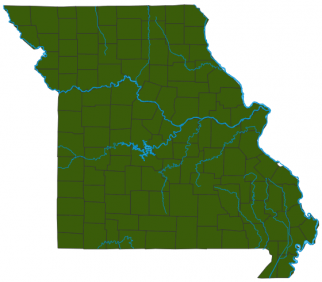
Blue jays are common statewide in forests, woodlands, parks and suburbs—wherever there are trees.
Habitat and Conservation
Blue jays are found wherever there are trees in our state, but although they are present year round, they migrate, so that the birds in any particular area might be replaced each season by others. Sometimes people see bald-headed blue jays—blue jays without feathers on their heads. This condition usually is reported in summer and fall, when they are molting, and new feathers usually grow in soon after.
Food
Acorns, fruits and seeds make up most of the diet, but blue jays will also feed on insects, eggs, young birds and carrion. Blue jays are often found at bird feeders.
Status
Common permanent resident.
Life Cycle
Blue jays usually form lifelong monogamous pairs and breed in spring to the middle of summer. Usually 4–5 eggs are laid in a cup-shaped nest. Eggs hatch in about 16–18 days, and the young fledge about three weeks later. Family groups travel and forage together for the rest of the season, with the young dispersing in wintertime.
Human Connections
Although blue jays can sometimes be aggressive toward other birds at feeding stations, bird watchers still enjoy their bright colors, clever feeding strategies and sassy attitude.
Ecosystem Connections
The assertiveness of blue jays extends to their relationship with potential predators, and their screaming and mobbing behaviors serve to protect many bird species against hawks, owls, cats and other predators.
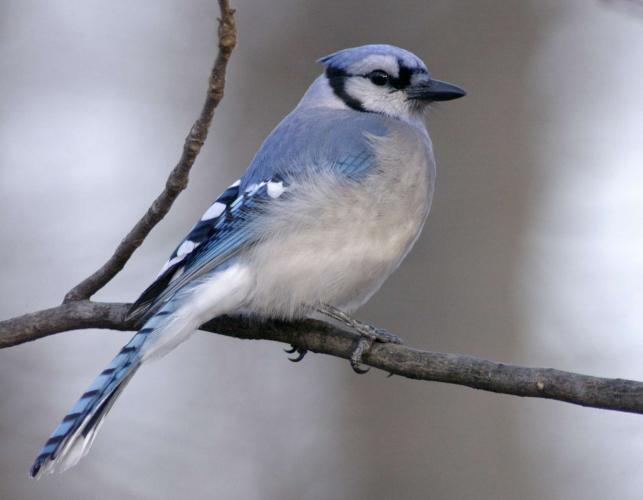
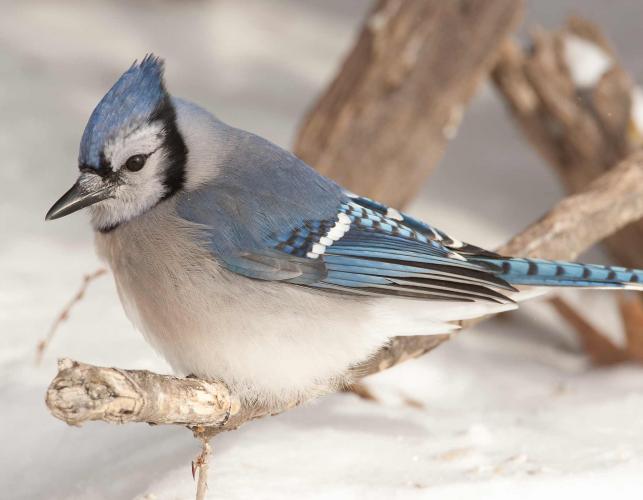
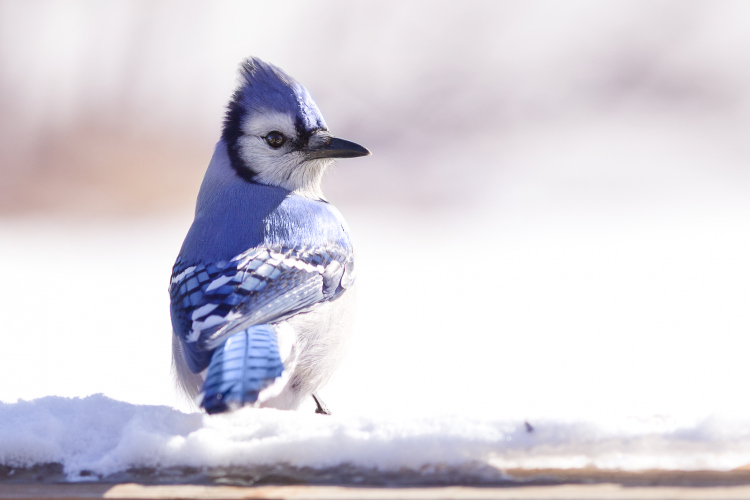

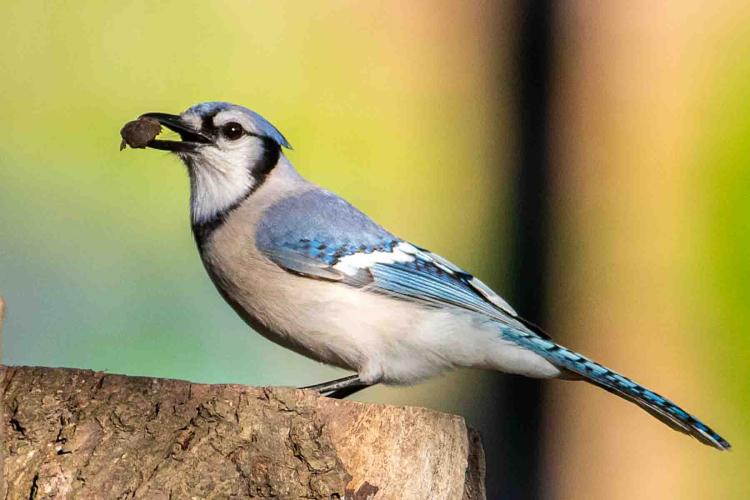
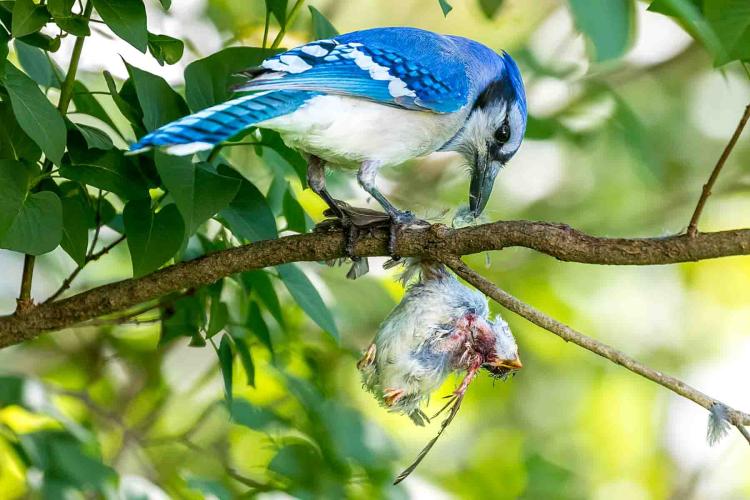
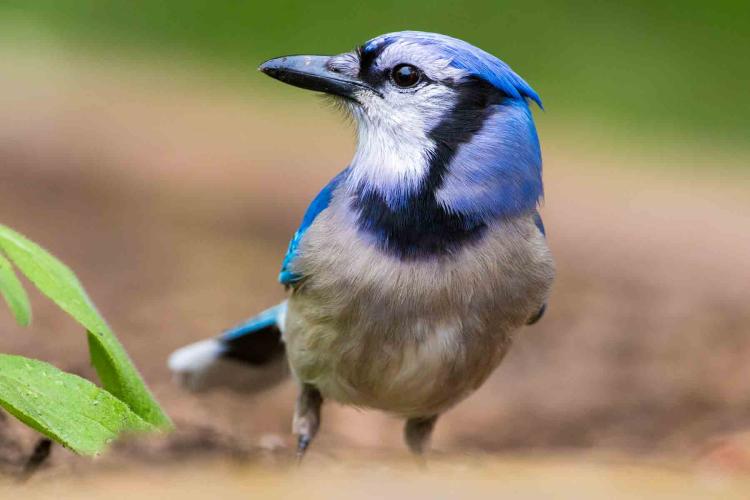
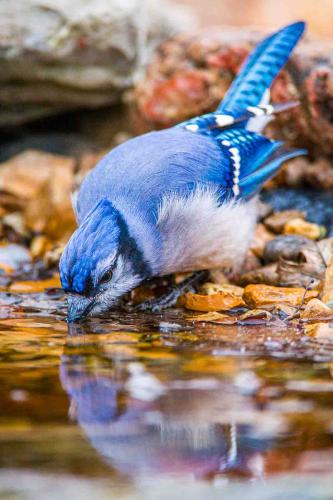
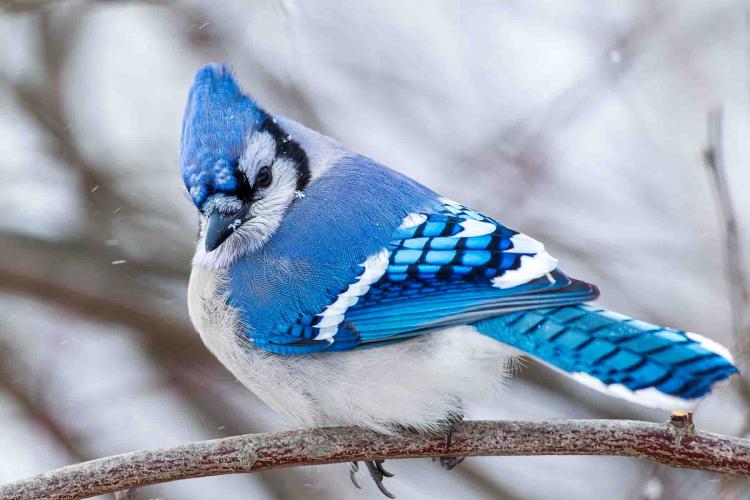
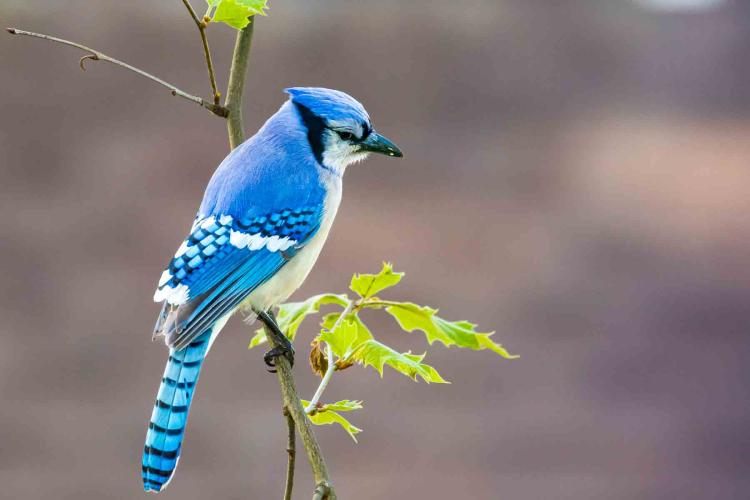
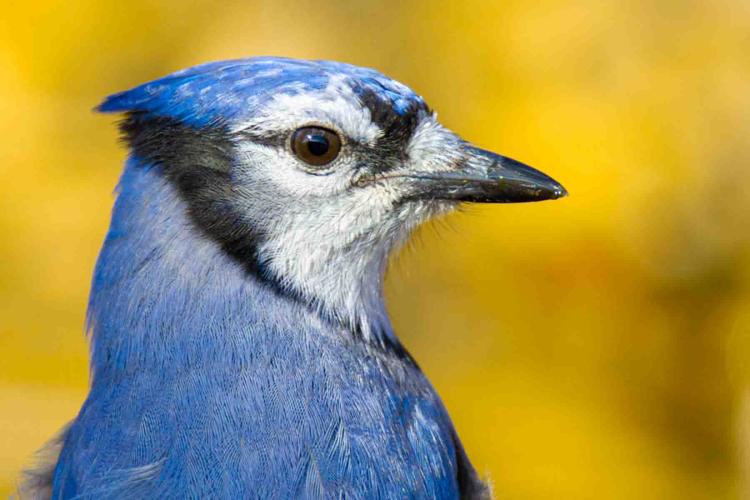
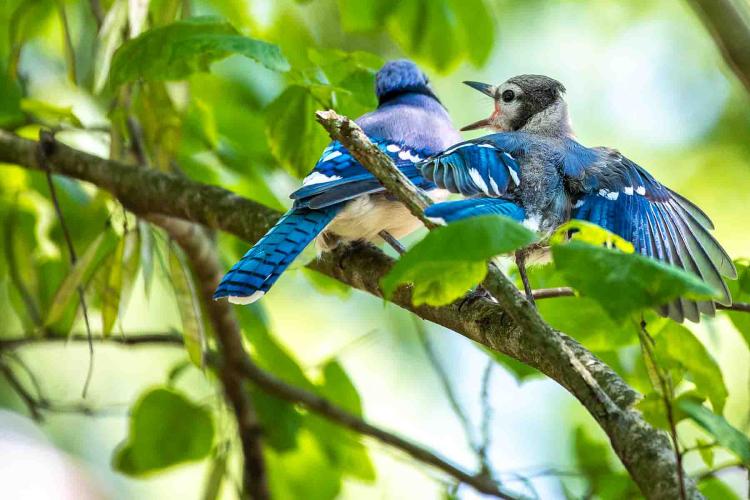
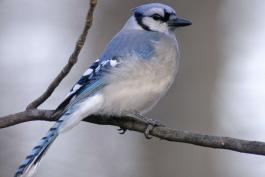
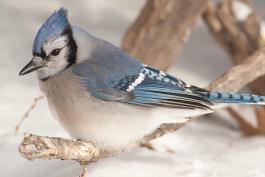
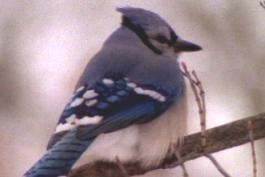
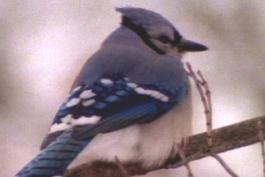
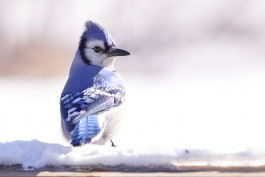

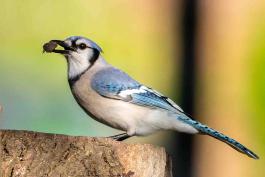
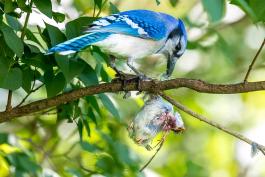
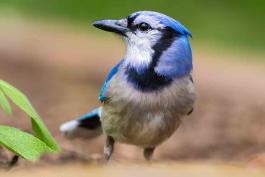
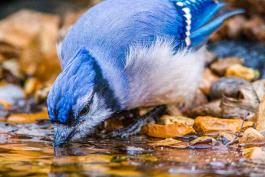
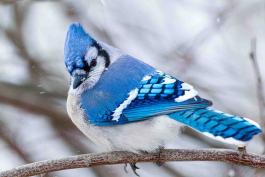
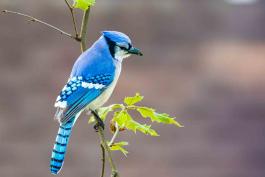
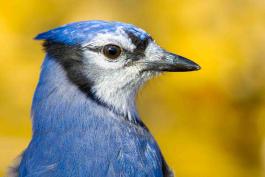
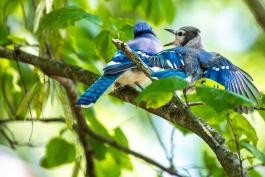
Where to See Species
About 350 species of birds are likely to be seen in Missouri, though nearly 400 have been recorded within our borders. Most people know a bird when they see one — it has feathers, wings, and a bill. Birds are warm-blooded, and most species can fly. Many migrate hundreds or thousands of miles. Birds lay hard-shelled eggs (often in a nest), and the parents care for the young. Many communicate with songs and calls.






















